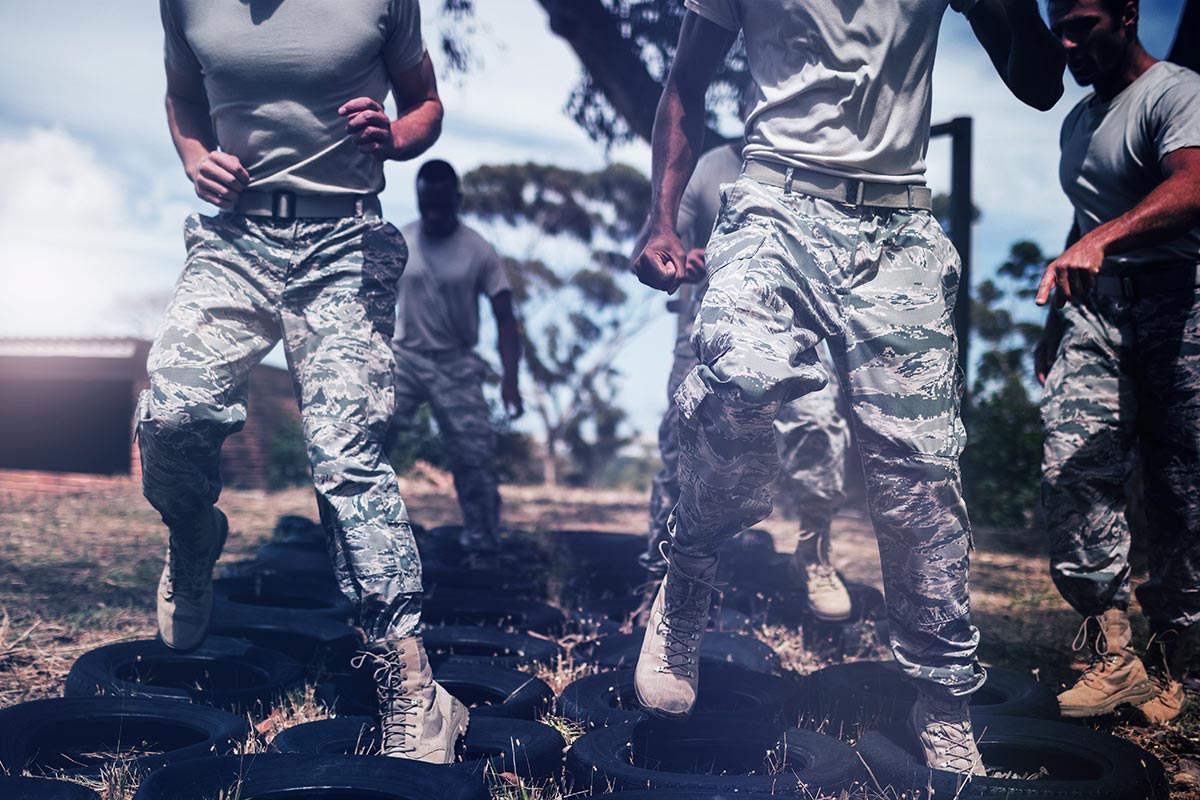Then and Now: A Quiet Professional’s Reflection
For decades Special Operators from all branches were for the most part lean and mean. For the current generation the emphasis seems to be on muscle mass. What happened? And why?
I joined USMC 2d Force Recon in the late 1970’s. Of course we had a few buffed Marines in our ranks, but the vast majority–author included–were on the lean side; very fit, but lean. Emphasis was on cardio because the Marine Corps Physical Fitness Test (PFT) favored stamina and a wiry body over brawn and power. All Recon Marines wanted to max the PFT: run 3 miles under 18 minutes; 80 situps under 2 minutes; and 20 dead hang pull ups. Big guys can do pull ups, but the feat takes freaky strength. I posit there are other factors that have contributed bigger biceps.
Modernized ISR: Intelligence, Surveillance and Reconnaissance, and now mini drones deployed down to the squad or even team level. What this means is that our forces will utilize fewer LRRP–Long Range Reconnaissance Patrols: ground, air or maritime. The target will be located via technology, and then the direct action force is transported to the objective. Patrolling is hard on the body, and the activity is a calorie burn just when chow and water are limited. Patrolling takes stamina, and if you are not lean and mean before an extended deployment–real world or training–where you hump, ruck, or patrol daily, you will be a tad thinner afterwards.
A Special Operator freshly inserted onto or near the objective can rely on his physical strength as back up to Close Quarter Battle (CQB), e.g. kicking in doors, moving walls, physically handling prisoners, and a man’s sheer bulk might dissuade the enemy from even attempting desperate move. And of course when it comes to hand-to-hand combat in close quarters, size matters.
Peer pressure: it seems like the idea of the Special Operator—whether SEAL, Delta, Recon, or other—has shifted from trim and on the quiet side to big and branded. Walk through any gym on base and you’ll see massive physiques, logoed gear, and a social media-ready swagger. It’s a cultural transformation. Some females, too. I am not arguing there is a problem here–just that it is a curious shift that transpired in about a generation’s time. One wonders if the advent of social media, what with selfies and even videos, induce troops to get that buffed look.
The Global War on Terror (GWOT) made a significant contribution from the cardio to muscle shift. Fearing a terrorist attack or kidnapping, going for a 5 mile run outside the wire was not happening, ditto swimming in a local pool, or biking for a couple of hours. Those events produce patterns terrorist spies pick up on. As a result, troops were confined to the compound. And the US Military being what it is, complete with excellent weight rooms as part of virtually any base in the world–cardio was tricky while barbells were aplenty. Even guys and gals who preferred cardio wound up pumping iron to get in a workout. Again, treadmills and stationary bikes helped, but barbells dominated most forward deployed gyms. (And black outs or brown outs make a treadmill a hazard).
Society at large: of course our society produces our soldiers so the latter do not stray too far from what’s happening on the home front. Over the past 20 years, and the last 10 especially, older folks have learned the value of weight lifting (and adding more protein to the diet–author included). Weight lifting helps with balance, movement, and longevity.
It should be mentioned bulk does come with drawbacks: if a Special Operator is on a low-visibility mission anywhere in the world, but especially in a poor part of the planet where food is scarce, and our boys are sporting 20” necks, even in local garb, they are anything but low-vis.
And of course as we have seen in the Russia-Ukraine conflict, drone warfare, especially mini drones, have disrupted battlefield tactics. While the following may come across as sacrilegious in the Special Operator world, a drone operator really does not need a big bench press. My point being, today’s Special Operator may require less time in the gym (and on the shooting range) and more time mastering tech.
The Hollywood Effect
Finally, some of this evolution can be traced back to pop culture. Movies, streaming shows, and even memoirs (some of which were written too soon) have helped create a public image of the modern Special Operator as a physically dominating, tattooed warrior with a dramatic past and a heroic Instagram account.
There’s nothing wrong with public recognition. But when the image becomes more important than the effectiveness, we’re losing something vital.
Final Thoughts
I’m not really taking a side in the cardio vs muscle debate, just recognizing the shift in the culture in the Special Operator world. I guess men and women in uniform should do both (cardio and weights), and then favor the activity that works best for the individual: time allowed, budget, security posture, and the all important mental benefits.
